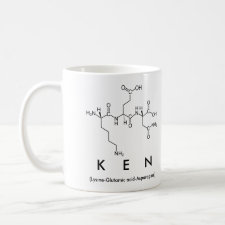
Authors: Hart BR, Shea KJ
Publication date: 2002
Chapter title: Molecularly imprinted polymers.
Page numbers: 667-681.
DOI: 10.1002/0471216275.esm054
Book title: Encyclopedia of Smart Materials
Editors: Schwartz M
Publisher: John Wiley & Sons Inc.
Abstract: Molecular imprinting is a process for synthesizing materials that contain highly specific recognition sites for small molecules. The imprinting process consists of a template molecule that preorganizes functional, polymerizable monomers. This template assembly is copolymerized with a large excess of cross-linking monomers to produce an insoluble network material. Extraction of the template molecule leaves behind a region that is complementary in size, shape, and functional group orientation to the template molecule. The resulting polymeric materials are referred to as molecularly imprinted polymers (MIPs).
Intermolecular forces between the template, functional monomers and polymer matrix determines MIP structure. Pre-organization of the functional monomers has been achieved with covalent, electrostatic, and hydrogen bonding interactions. The most common method of polymer formation employs free radical initiation. These materials are tough, easy to handle, and have been shown to retain their recognition properties for over five years without loss of selectivity or capacity. As a result, they have advantages over more fragile biological systems for molecular recognition and have been referred to as "plastic antibodies". Under the proper conditions, MIPs have shown the ability to function as selective binding materials, microreactors, facilitated transport membranes, and catalysts. Their utility, coupled with their longevity and robustness, make MIPs candidates for applications in separation science, as industrial catalysis, and for medical diagnostics.



Join the Society for Molecular Imprinting

New items RSS feed
Sign-up for e-mail updates:
Choose between receiving an occasional newsletter or more frequent e-mail alerts.
Click here to go to the sign-up page.
Is your name elemental or peptidic? Enter your name and find out by clicking either of the buttons below!
Other products you may like:
 MIPdatabase
MIPdatabase









